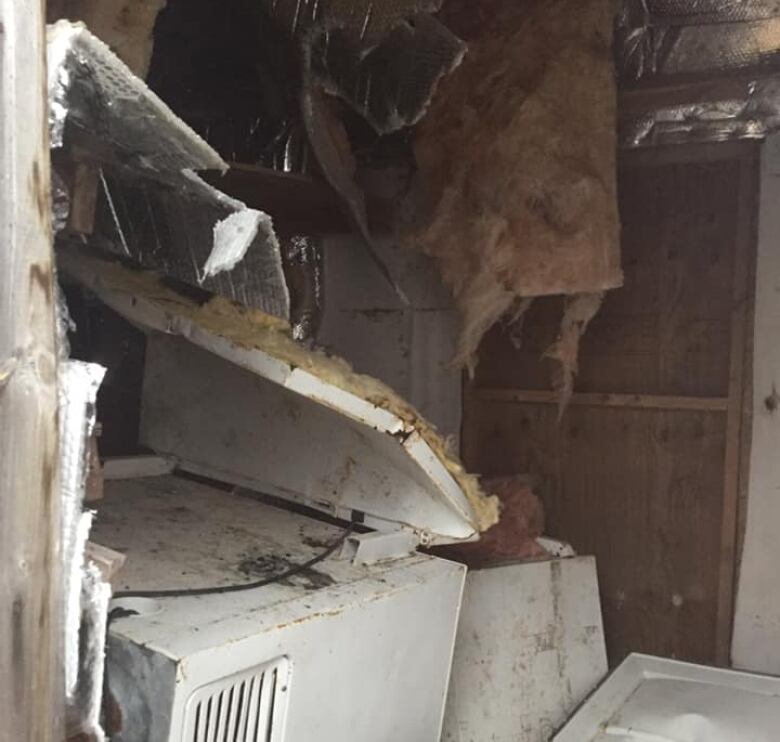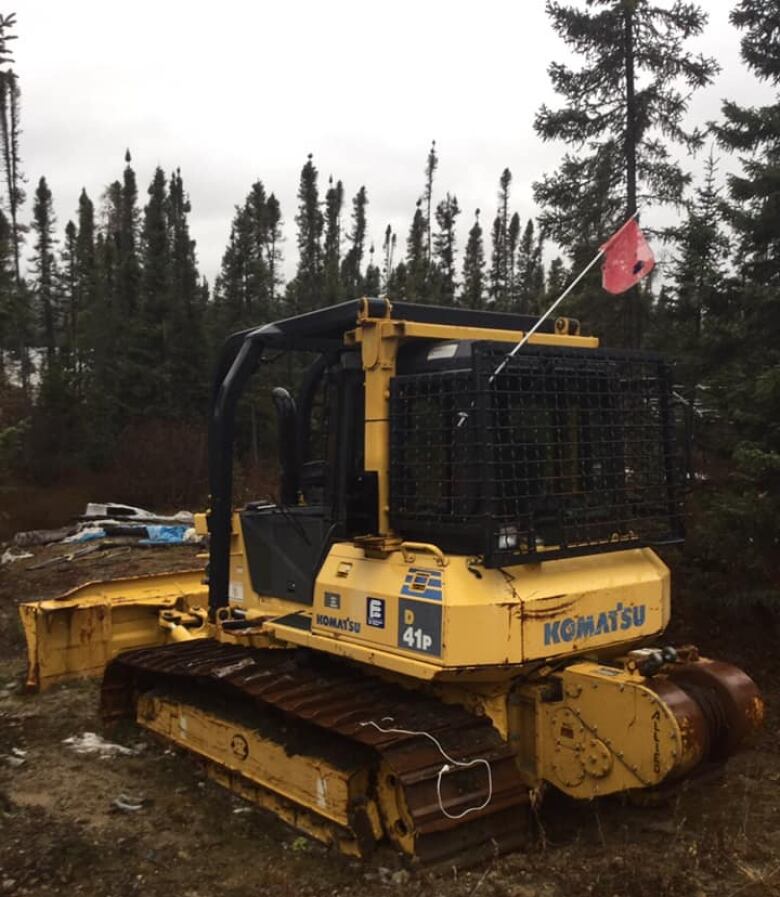'I'm angry': Cree man can't use trapline, blames debris prospectors left behind
'It doesn't feel right to hunt,' says John Rupert who hasn't harvested on his trapline since 2006

John Rupert hasn't fished or harvested animals on his trapline near the Cree community of Whapmagoostui since 2006 the year prospectors set up camp.
When those prospectors packed up two years later, they left behind a mess that is still there today.
"I'm not hunting there since then ... it doesn't feel right to hunt," said Rupert, 66.
Prospectors left behind300 fuel barrels, 100 old propane tanks and heavy machinery. There are also 14 decaying cabins, along with old fridges, insulation and other equipment, he says.
Full of diesel

Rupert says more than 20 barrels are still full of diesel fuel and he sees oil and other chemicals leaking into the surrounding dirt and water.
"I'm angry sometimes," said Rupert. "They didn't even ask permission."
What the prospectors were looking for is not entirely clear. Rupert says they told him they were from Strateco resources and they were looking for uranium.
The company, which was actively looking farther south in Cree territory at the time, says it was not prospecting anywhere near Rupert's trapline some 60 kilometres southeast of Whapmagoostui.
More likely, according to Youcef Larbi, director general and chief geologist with the Cree Mineral Exploration Board, the prospectors were looking for iron ore and abandoned the camp in 2008 because the prices were too low and Whapmagoostui was too expensive a place to prospect in as a fly-in-only community.

In 2018, theQuebec Ministry of Energy and Natural Resources, pegged the number of abandoned mineral exploration sites across Eeyou Istchee at 218,including everything from a single can of oil, to prospecting camps like Rupert's, to actual mines.
However, the Ministrysays an exact number won't be known until after a full inventory currently underway is complete.
Rupert's trapline is on the list to be cleaned up, according to Larbi. He says many of the others are not as bad as Rupert's, but some are much, much worse.
They are the echoes of an industry that for many years didn't have a lot of rules or obligations to clean up, Larbisaid.
"The legislation from the government back then wasn't very tight," he said, adding that it was already better in 2006 than it had been.
"They were closing their eyes because it's very far and nobody was going to see it."

Rupert's trapline is on what the Cree call Category 3 land, where even today, Larbi saidprospecting can bedifficult to control.
In 2010, the Cree Nation Government adopted a mining policy requiring prospectors get the permission of tallymen, or Cree land stewards, like Rupert. In 2002, the Cree also created Larbi's group the Cree Mineral Exploration Board with the mandate to improve local expertise in exploration, act as a bridge between the industry and Cree, and to educate.
I want to be able to go back.- John Rupert, Whapmagoostui tallyman
In 2018, Quebec and Cree governments, along with the Eeyou-Istchee James Bay Regional government and the Fonds Restor-Action Cri a mining industry group committed to helping clean up abandoned sites signed an $11 millionagreement to restore the abandoned sites in Eeyou Istchee.
Of the $11 million, $300,000 is coming from industry andthe rest is coming from various levels of government. The cleanup work is set to begin in 2020 and continue until 2029.
In 2013, the Quebec government made changes to the Mining Act, requiring companies put cleanup money in a trust before a mining project gets a green light, but it is unclear what obligations exist for prospecting camps.

All of this is cold comfort for tallyman John Rupert, who says he won't feel comfortable harvesting on his trapline until it is cleaned up and soil and water tests prove to him it is safe.
CBCNews requested information fromthe Cree Nation Government regarding specific plans to clean up Rupert's trapline, but didn't receive information in time for publication.
"I want it to be cleaned as soon as possible and [there to be] samples on land and of the water," said Rupert.













_(720p).jpg)


 OFFICIAL HD MUSIC VIDEO.jpg)
.jpg)



























































































